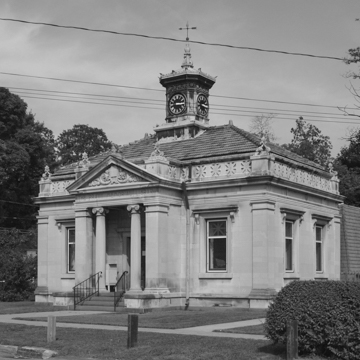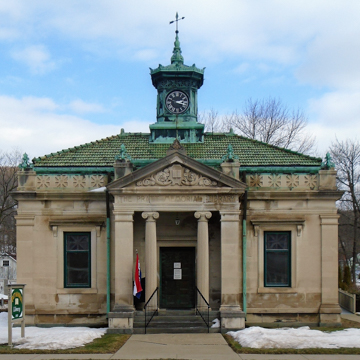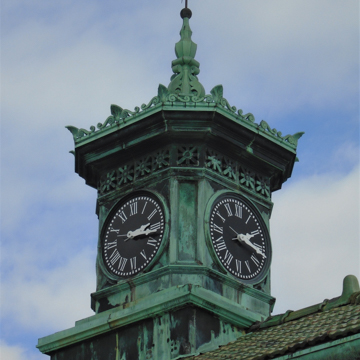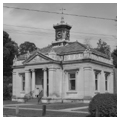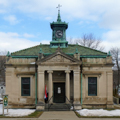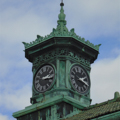Except for the one-story rear addition, this small, dressed Indiana limestone ashlar library has not changed since it opened in 1904. Architect Hawley of Philadelphia was a native son; his father was a local teacher and state senator. Hawley finished his drawings for the library in the summer of 1900 while visiting his mother at nearby Heart Lake. The Beaux-Arts design with an Ionic distyle in antis portico was standard for libraries at the time. Yet the striking similarity of Hawley's library and Brown University's larger John Carter Brown Library (1898–1904, Shepley, Rutan and Coolidge) appears more than coincidental. The differences are size and Hawley's omission of the cornice cresting and his addition of a copper clock cupola. Charles C. Pratt, a prominent citizen and later congressman, built the library in memory of his parents, Ezra and Mary Pratt, who founded the library in their home in 1892. St. Mark's Episcopal Church (1827) at 115 Main Street is a mixture of Greek and Gothic Revival detail.
You are here
Pratt Memorial Library
1900–1904, E. Hayden Hawley; 1969–1970 Abigail Adams deSombre annex, Joseph R. Young. 247 Main St.
If SAH Archipedia has been useful to you, please consider supporting it.
SAH Archipedia tells the story of the United States through its buildings, landscapes, and cities. This freely available resource empowers the public with authoritative knowledge that deepens their understanding and appreciation of the built environment. But the Society of Architectural Historians, which created SAH Archipedia with University of Virginia Press, needs your support to maintain the high-caliber research, writing, photography, cartography, editing, design, and programming that make SAH Archipedia a trusted online resource available to all who value the history of place, heritage tourism, and learning.


